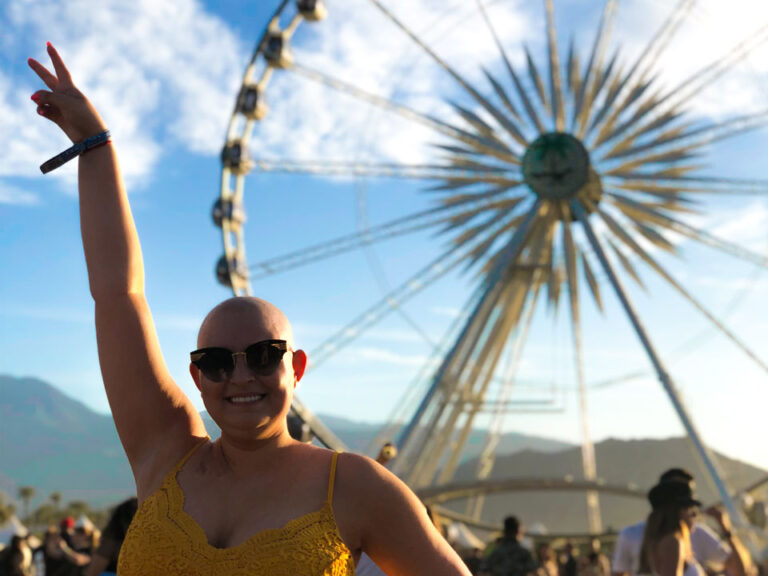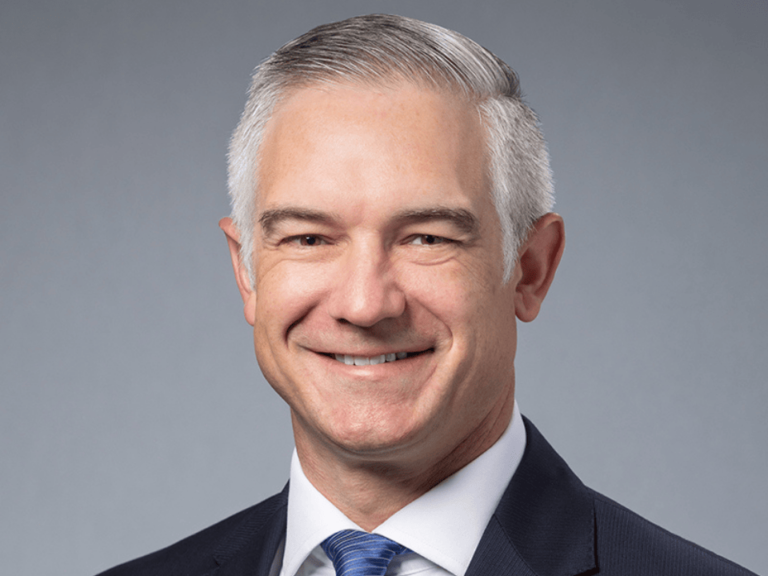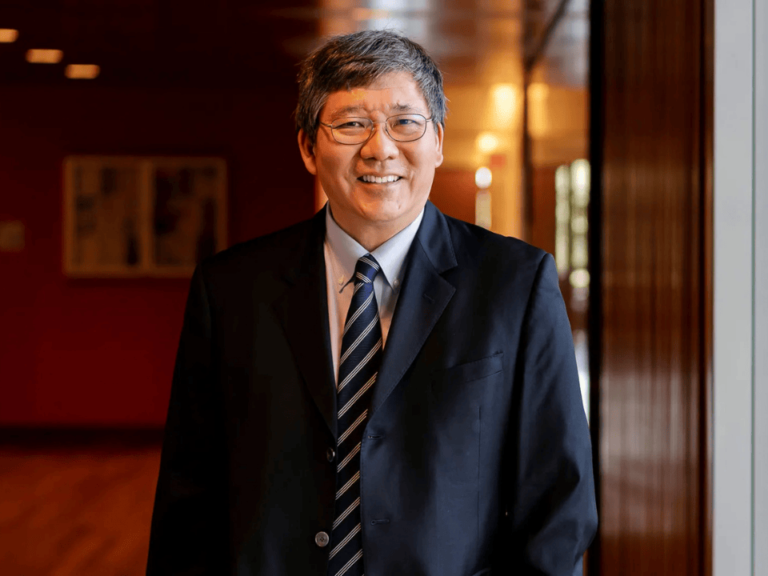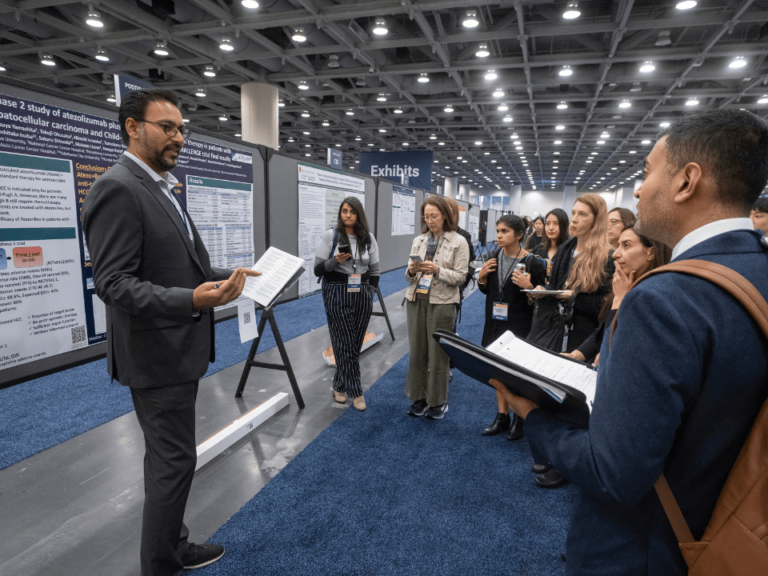At a roundtable discussion at Memorial Sloan Kettering Cancer Center, Vice President Joe Biden urged greater efforts to aggregate cancer data.
“I know MSK is part of Project GENIE and part of data sharing coalitions,” Biden said at the meeting May 26. “But I’ve met also with ORIEN, I’ve met with CancerLinQ.”
“You’re all doing the same thing! I find it curious. I don’t know if that’s the only way it that can be done.”
“What happens if it was all aggregated in one place?”
The text of Biden’s opening remarks follows:
One of the objectives I have is going to sound strange.
And that is how to be able to translate very complicated—and how can I say it—frightening jargon into understandable plain English. Not as opposed to Spanish, as opposed to complicated to the American people so they can get a better sense of the remarkable work you’re doing.
Because part of the likelihood of this moonshot, and it’s probably inappropriately named, this effort to do in five years what would otherwise take 10 to 15 years, depends on the public’s confidence and understanding of what we’re talking about. And no one knows this better than the doctors assembled around this table, when you have to explain to a patient you’ve just diagnosed what this is all about.
I didn’t plan on attempting to learn as much as I possibly could about cancer. I am like every other husband, wife, spouse, brother, sister, father—that when someone close to you encounters a serious dilemma, the instinct is you try to learn as much as you can about it in order to be helpful, no matter what it is. It doesn’t have to be a disease; no matter what it is you try to learn as much as you can. Like every family that faces cancer, my family did everything in its power to learn as much as we could about the particular cancer my Beau had, my son had, and knowing that we weren’t going to have the answer, but trying to find out where to go to get the best answer possible. We were lucky.
We were exposed and had access to the best doctors in the world. The more we talked to the incredible doctors who were treating my Beau, the more we realized how much has recently changed. I was amazed to learn that what has happened in the last five to seven years is a bit of an epiphany. Those of you that are in immunology, you were sort of out in the wilderness for the previous 50 years or longer. But what I learned from so many wonderful scientists and doctors making themselves available to me, is that we are really at an inflection point here.
Doctor, you’re a great surgeon and you said you wish that we could be better. Well, it’s not your hands doctor, they’re as good as they could possibly get at what you could do, but knowing exactly what to do. I watched the surgeon having done it 100 times, 1,000 times, probably, labor over just how much of the glioblastoma could he excise. Just the incredibly difficult decisions you have to make on the spot while in there.
But what I’ve learned is that there’s a coalescence of disciplines that wasn’t even occurring five years ago—I just thought it was always this way, but I’ve learned a great deal since, and it’s given me reason for hope. And even though it was a difficult time 10 months, nine months ago when I decided it was not appropriate for me and my family at the time for me to run for president. The president walked me out to the Rose Garden at the time for me to make the announcement—none of this was planned—but I said if I ever had any regret about not running, I would’ve liked to be the president to preside over ending cancer as we know it.
It’s interesting how something that wasn’t planned in a statement just took a life of its own. Before I knew it, the president—without telling me, that devil—was announcing in the State of the Union that I was going to head up a new effort at a federal level. Another moonshot. It could’ve been called a Manhattan Project. It could’ve been called anything to emphasize that we were going to bring all of the firepower that we could possibly bring to this issue to promote more rapid movement, more rapid change, more rapid progress.
The president made a statement at that time, and that was like he did when he asked me to do the [American Reinvestment and] Recovery Act, which was over $800 billion dollars in 18 months. He said he literally let the cabinet know, he sent out the essence of an executive order or an internal memorandum that every single department head and every single element of the government that has anything to do with the possibility of dealing with the issue was answerable to me. By that I mean they’re always answerable to the president. But he made it clear there was no need to check with him.
He just wanted me to begin to organize with a greater sense of urgency what the role the federal government should be playing, how we could eliminate bottlenecks in the process we have—everything from approving trials to just across the board. And I just want you to know, those of you who are working on the bench every day, that I got absolutely no realer sense of enthusiasm, as the assistant secretary can tell you, whether it’s HHS or the Department of Energy.
You’ll say what in God’s name does the Department of Energy have to do with anything? Well, guess what, we’re on the verge of having computers that can do a billion billion calculations per second. That has phenomenal promise if we can get our act together in terms of aggregating information, which we don’t do very well now, in this field.
So across the board, every discipline has signed on. So what I’ve done, Mr. [MSKCC] President [Craig Thompson], is I’ve gone out and I called a cabinet meeting, hired a chief of staff, Greg Simon, who is here, who has considerable experience on the management side of this effort. He did the Milken Foundation, was chief of staff in the Al Gore administration, and began to organize a way how we at the federal level could do our job better and be more accessible to, and more responsive to the needs of the community working on the problem. But I also went around to the great institutions like yours to hear what you had in mind, what you thought, not only on what was happening.
I’ve become more educated than I ever thought I would be about the science and medicine behind what you’re doing. I’m no expert. My mother used to say that a little bit of knowledge is a dangerous thing. Well, I’ve got a little bit more than a little bit of knowledge, but don’t ask me to diagnose anything. The interesting thing is the response internationally and nationally. I’ve touched a lot of the community. I’ve heard from thousands of survivors. That’s no hyperbole, thousands of survivors. I’ve met with over 250 leading oncologists, six Nobel laureates, dozens of philanthropists who have invested literally billions combined in this effort. Your former mayor, I showed up, he asked me to go with him to his former alma mater, he introduced me and he laid down a check for $125 million for their new immunotherapy effort down there. There are a lot of people out there like Mayor [Michael] Bloomberg who are devoting enormous amounts of, portions of their fortunes, to deal with this.
The interesting thing is that my, if I have any expertise, you know that old joke that an expert is anyone from out of town with a briefcase? I don’t have my briefcase with me, but I know a fair amount about foreign policy. I spent the bulk of my adult life dealing with world leaders. It’s interesting because no matter where I go around the world since this has been announced—for example, I went to meet with the head of state in the Middle East to discuss ISIS. Before the meeting began, he had his whole team with him there, he said “Mr. Vice President, I would like to talk to you about cancer. Can we work out a memorandum of understanding with you?” That was an Arab country. Then I went to Israel, “Can we work out a memorandum of understanding? Here’s what we have done.” We had the nuclear security summit. President [Shinzō] Abe and President Park [Geun-hye], of Japan and Korea respectively, both came to me before it began and said, “Can we talk about collaborating together? How are we going to do this?”
The point that I’d like to make: I’ve been around a long time, as that old bad joke goes, “It’s true, some of my best friends are Republicans.” I was there when we used to all get along, I mean, for real. If you’ve noticed, whenever there’s any problem in Congress, I’m the guy who gets sent to the Hill, because my colleagues up there know I respect them, I respect the institution and I have really deep friendships. It’s interesting. There’s total bipartisan support. And as a matter of fact, some of the best leadership coming from the Hill, now in terms of funding this first year of a new moonshot, is being led by Republicans who know what they’re talking about in their committees—as well as Democrats—who are prepared to talk about meeting my request for $1 billion this year, which is, you know, you couldn’t get a commitment to spend a nickel on a lot of other things. The generic point is that there is a lot going on right now and a willingness to cooperate in ways across the board and across the borders.
As you know, as one of the top treatment facilities, you care for patients during the most terrifying experience of their life, but our efforts can’t focus on just world-class facilities. The thing that I learned that I didn’t know before: whether at MD Anderson where my son was, or at Fred Hutchinson or at the University of California San Francisco Helen Diller Family Cancer Center, the Huntsman Institute in Utah or here, more than 75 percent of cancer patients are treated by community oncologists. The community oncologists are mostly significantly behind whatever you have here, whatever they have at MD Anderson, whatever they have at Huntsman, whatever they have at Hopkins. More than 75 percent are treated by community oncologists who are not at all located near great cancer centers.
The thing that intrigues me, among many things, Mr. [Thompson], what you’re doing here is you’re focusing on the best treatment plans to patients that are in underserved communities, as well as in those areas where they don’t have access. I’m anxious to hear from all of you on what you’re seeing on the front lines of patient care and how we’re going to go about solving this major challenge. What I’d like to do, let me tell you about what my overarching question is: how do we get information that’s available here at Sloan Kettering to a community oncologist in Elmira, N.Y. How do we get the information that’s available at Hopkins to Southern Delaware in Sussex County? How do we do these things?
I’ve observed that there are a number of impediments. Most major cancer centers don’t have an easy way, or in many cases the motivation to share patient data, including patient records, patient tests, family history, treatment responses. That has to change, I don’t know how. I’m coming to you for help as to how that has to change. Too much published research, as you know, is hidden behind paywalls, leading to unnecessary duplication, failed efforts, and wasted time and money. By the way, if I gave you a grant from Defense Advanced Research Projects Agency, DARPA, and I ask you to work on the space station, whatever you come up with you have to publish immediately. It must be available to everyone in the world, everyone else doing it. As they say in Southern Delaware, “Y’all are different.”
There’s no open national network that allows any researcher, physician, or patient access to raw data in a privacy-protected manner. I was talking to one of the docs upstairs and he was saying, “It’s privacy.” I can take care of the privacy problem for you, that’s not hard at all. That’s not difficult at all. It requires work but it’s not difficult. So how would this data enable researchers to then find new patterns in patient treatments and get improved diagnostics?
We have to support quality analysis to turn raw data into knowledge that helps patients and their caregivers.
There’s got to be a way to figure out how we share, to aggregate more of this information, in my view. At least that’s the conclusion that my team and I have come up with after nine months of going around the country.
What are other cancer centers doing to extend your reach so the community oncologists and their patients have access to the highest level of clinical care? How are you sharing research results from clinical trials? Even with de-identified patient data, so progress in oncology research and care can move faster. There are many more questions, I’m going to stop here.
Every day, you know better than I do, and I’m not suggesting that you don’t care, I know you care immensely, thousands of people are dying. Thousands of people are desperately looking for hope, so we have an urgency to make a difference and the moonshot hopefully will be the vehicle to generate that sense of urgency, and provide some of the pieces that are missing.
To my understanding, Sloan Kettering is focusing on patient access, and today we’re going to hear from you folks on how we can improve that. I’m looking for suggestions. I’m looking for information to help me aggregate some of the proposed changes that we should make either internally, that we have control over by executive order, or by legislation, or in terms of playing a role in being a convener to get more done in the private sector. So, I appreciate very much your willingness to have me here.
I know MSK is part of Project GENIE and part of data sharing coalitions. But I’ve met also with ORIEN, I’ve met with CancerLinQ.
You’re all doing the same thing! I find it curious. I don’t know if that’s the only way it that can be done.
What happens if it was all aggregated in one place?
Katie McKinney contributed to this story.











